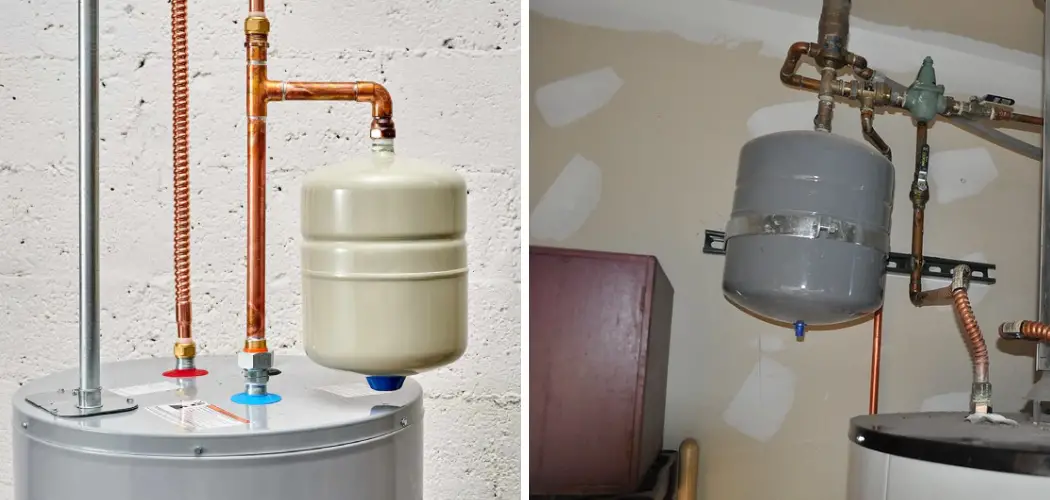As the winter season approaches, many homeowners are busy preparing their homes for the colder months ahead. One important maintenance task for those with hydronic heating systems is ensuring their boiler system is ready and optimized for efficiency as heating demands increase. A key component of any boiler system is the expansion tank, which plays a vital yet often overlooked role in protecting your boiler and pipes from damage.
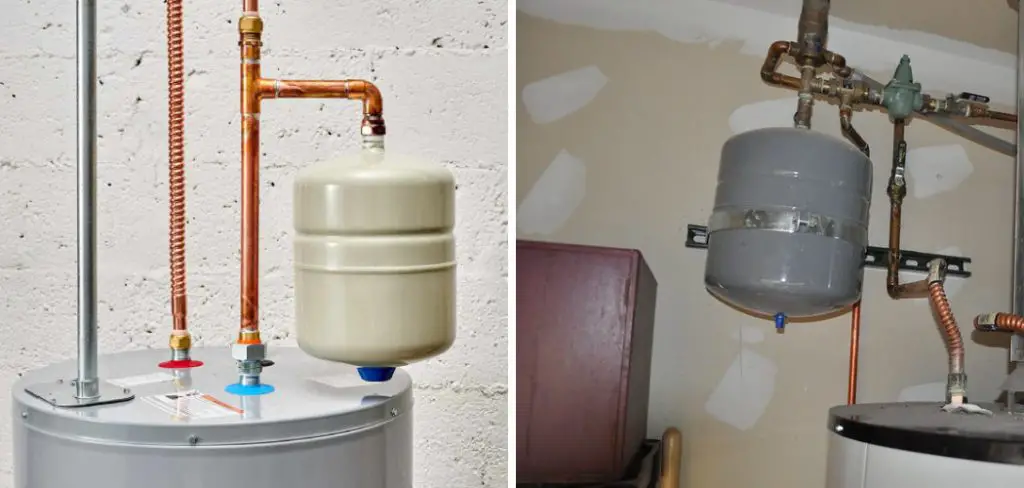
In this post, I’ll explain what an expansion tank does, why it’s important, and provide a step-by-step guide for how to install expansion tank on boiler. By the end, you’ll understand how this low-cost component can provide peace of mind by preventing problems before they happen and extending the lifetime of your boiler and heating system.
Why May You Want to Install Expansion Tank on Boiler?
1 . To Prevent Pressure Buildup
When water is heated, it expands and the pressure inside a closed system increases. This increase in pressure can cause damage to your boiler, especially if it includes sensitive components such as heat exchangers or valves. By installing an expansion tank, you create a safe space for the excess water volume to go and prevent any potential damage.
2 . To Reduce Energy Costs
When a boiler doesn’t have an expansion tank, it may require more energy to operate. This is because the increased pressure can cause frequent cycling on and off, which uses up more energy. With an expansion tank in place, the pressure is regulated and there is less strain on the system, leading to lower energy costs over time.
3 . To Prolong the Life of Your Boiler
As mentioned, excess pressure can cause damage to your boiler. This can lead to costly repairs or even a full replacement of the unit. By installing an expansion tank, you are preventing this potential damage and prolonging the life of your boiler. This not only saves you money in the long run but also ensures your boiler continues to operate efficiently.
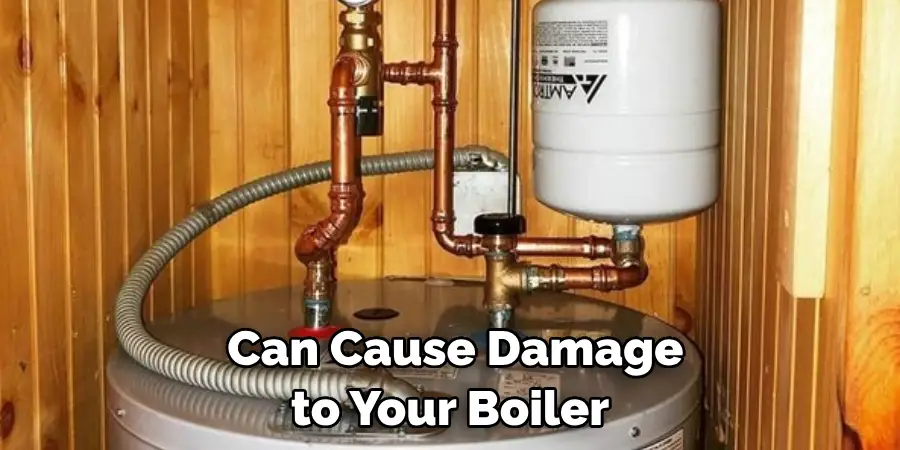
How to Install Expansion Tank on Boiler in 5 Easy Steps
Step 1: Gather Your Materials
Before starting the installation process, make sure you have all the necessary materials including an expansion tank, pipe fittings, a wrench, Teflon tape, and a pressure gauge. You may also need additional tools depending on your specific boiler setup.
Step 2: Turn Off the Boiler
For safety reasons, it is important to turn off the boiler before beginning any installation work. Make sure to also wait for the boiler to cool down completely before proceeding with the installation process.
Step 3: Identify Where to Install the Expansion Tank
Expansion tanks are typically installed on the supply side of the boiler, near the boiler or on the ceiling above. Consult your boiler manual to determine the best location for installation.
Step 4: Install the Expansion Tank
Begin by attaching the pipe fittings to both ends of the expansion tank using Teflon tape to ensure a tight seal. Then, connect one end of the expansion tank to the supply line and the other end to either the return line or the ceiling if that is where you have chosen to install it. Use a wrench to securely tighten all connections.
Step 5: Check and Adjust Pressure
Once the expansion tank is installed, turn on the boiler and check the pressure gauge to make sure it reads between 12-15 psi (pounds per square inch). If the pressure is too high or low, use the valve on the expansion tank to adjust it accordingly.
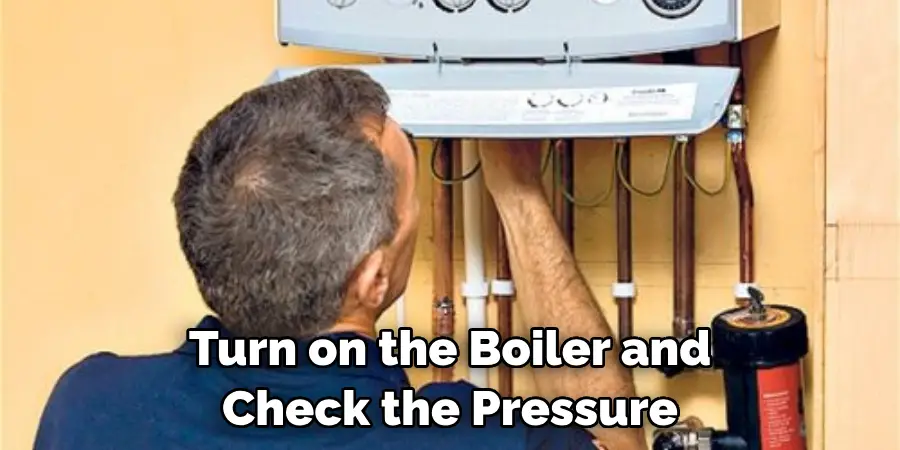
Congratulations, you have successfully installed an expansion tank on your boiler! This important component helps regulate pressure and protect your boiler from damage. Be sure to regularly check and maintain your expansion tank to ensure optimal performance of your boiler system. So, learning how to install an expansion tank on a boiler can save you.
Some Extra Tips to Install Expansion Tank on Boiler
1 . Do Not Place the Tank Close to the Boiler
When installing an expansion tank, it is important to keep in mind that you should not place it too close to the boiler. The recommended distance between the two is at least 12 inches. This will allow for proper air circulation and prevent any potential damage to either component.
2 . Use Brackets or Strapping for Support
Expansion tanks can be quite heavy and may put a strain on the pipes if not properly supported. To avoid any mishaps, it is recommended to use either brackets or strapping to support the expansion tank and keep it securely in place.
3 . Check for Leaks After Installation
After installing the expansion tank, it is important to check for leaks before turning on the boiler. This will ensure that everything is properly connected and there are no leaks in the system. If you do find any leaks, be sure to fix them before proceeding.
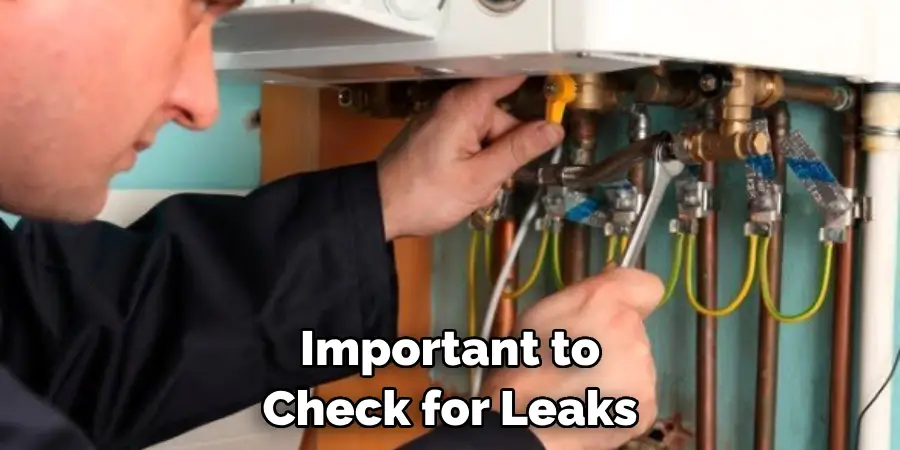
4 . Properly Size the Expansion Tank
It is crucial to choose the right size for your expansion tank based on the size of your boiler and heating system. A small tank may not provide enough room for the expanding water, while a large tank may cause pressure issues. Consult with a professional or refer to the manufacturer’s guidelines to determine the correct size for your specific system.
5 . Perform Regular Maintenance
Like any other component of your boiler system, the expansion tank also requires regular maintenance to ensure its proper functioning. This includes checking and adjusting the air pressure, draining and flushing the tank, and checking for any signs of corrosion or damage. Proper maintenance will extend the lifespan of your expansion tank and prevent any potential problems.
Frequently Asked Questions
What Precautions Should I Take Before Installing an Expansion Tank?
When it comes to installing an expansion tank on your boiler, there are a few things you should keep in mind before getting started. Firstly, ensure that the power supply to the boiler is turned off and that it has completely cooled down.
This will help avoid any potential accidents or injuries while working with the equipment. Additionally, make sure to read the manufacturer’s instructions carefully and have all the necessary tools and materials on hand before beginning the installation process.
How Do I Choose the Right Expansion Tank for My Boiler?
Choosing the right expansion tank for your boiler depends on a few factors such as the size of your boiler, its maximum operating pressure, and whether it is a closed or open system. It is always best to consult a professional or refer to the manufacturer’s recommendations to ensure you select the correct expansion tank for your specific boiler.

Can I Install an Expansion Tank on My Boiler by Myself?
While it is possible to install an expansion tank on your boiler by yourself, it is highly recommended that you seek the assistance of a licensed professional. This will not only ensure that the installation is done correctly and safely, but it will also avoid any potential warranty issues with your boiler. Additionally, a professional can properly assess your system and determine the best location for the expansion tank to be installed.
What Are Some Benefits of Installing an Expansion Tank on My Boiler?
Installing an expansion tank on your boiler can have several benefits such as reducing pressure fluctuations in the system, preventing water leaks and damage to the boiler, and prolonging the lifespan of your boiler. It can also help improve the overall efficiency of your heating system and save you money on energy costs in the long run.
What Maintenance is Required for an Expansion Tank on a Boiler?
Expansion tanks on boilers typically require very little maintenance. However, it is important to check the air pressure in the tank periodically and top it up if needed. It is also recommended to have a professional inspect the expansion tank annually to ensure it is functioning properly and replace any worn parts if necessary.
How Much Will Installing an Expansion Tank on My Boiler Cost?
The cost of installing an expansion tank on your boiler will vary depending on the size and type of expansion tank needed, as well as any additional labor costs. It is always best to get quotes from multiple professionals and compare prices before making a decision.
However, keep in mind that investing in a high-quality expansion tank can save you money in the long run by preventing potential damage to your boiler. Overall, installing an expansion tank is a relatively affordable and worthwhile investment for the longevity and efficiency of your boiler system.
Conclusion
It’s important that you take the proper steps to install an expansion tank on your boiler in order to avoid costly damages from overpressure and ensure the optimal performance of your boiler system. From gathering the right materials and tools, to understanding local codes and confirming the correct size capacity of your tank, this process requires a lot of attention and effort.
With these tips on how to install an expansion tank on boiler in mind, however, you can take on this task with confidence. Installing an expansion tank isn’t easy, but it’s a necessary task for a well-functioning system – so save yourself time and money by making sure it’s done correctly.
If you run into any bumps along the way, don’t be afraid to consult reliable resources or call in an experienced HVAC contractor to help you get the job done safely and properly. Now get ready to tackle every step involved with installing an expansion tank on your boiler today!

